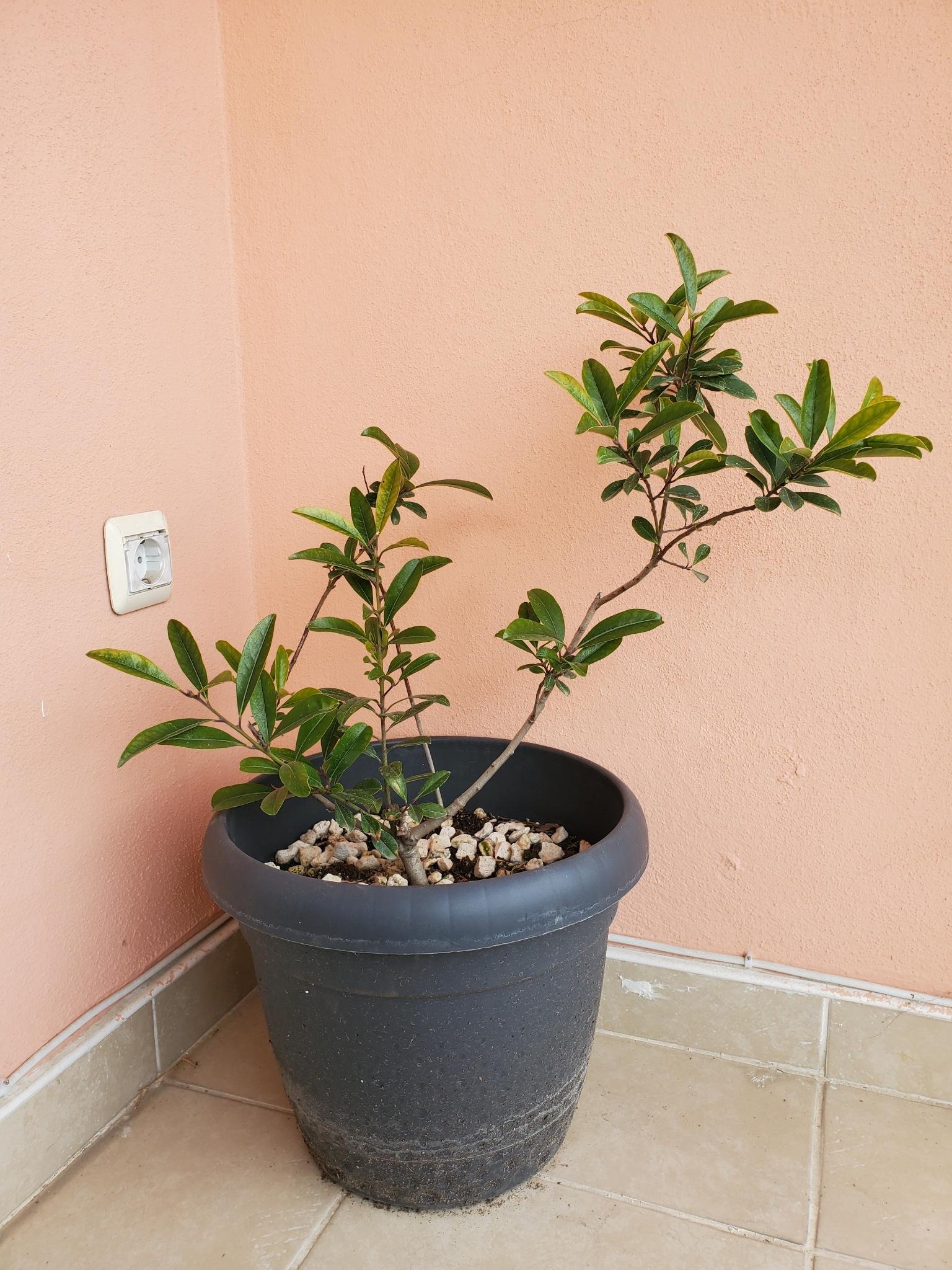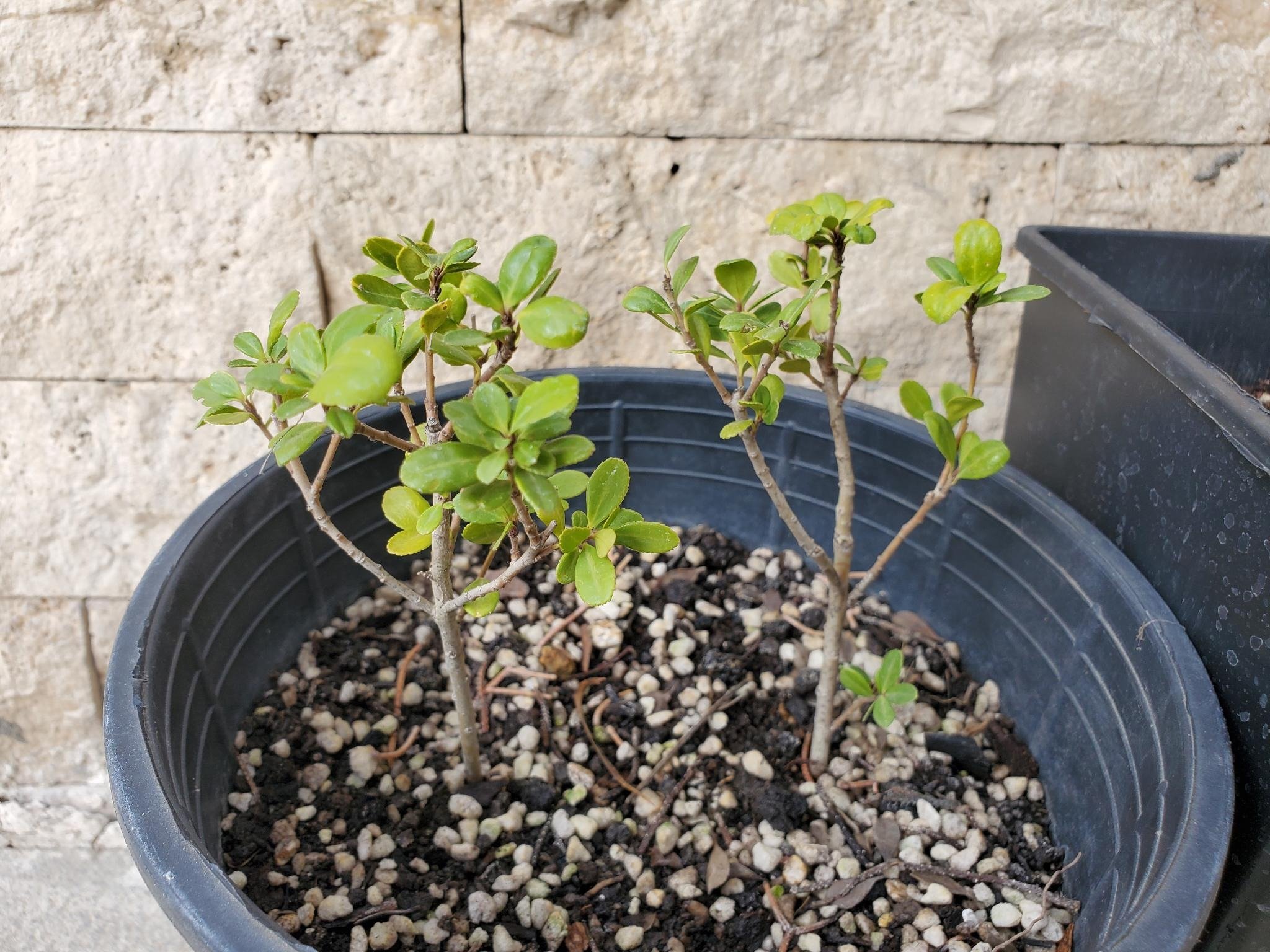Why teas?
I love growing and drinking teas. They bring people together, give us energy, make us feel better, and look great in gardens. The standard tea plant, Camellia sinensis, can express so many different flavors. I am very interested in gathering together genomic information for both conventional and CRISPR assisted development.
I am particularly interested in variegated and high anthocyanin varieties.
In China, there are efforts to select for teas that are “purple” or “red”, which are rich in anthocyanins. The Zijuan cultivar is known for having a purple look to its new leaves (which are picked for tea) and has been measured to have a particularly high anthocyanin content. There is a delicious tea from Kenya called “Purple Tea” that was brought around the world by Justea. There are species in the Camellia genus (like Camellia japonica “Night Rider”) that grow new leaves that come out a deep red. A program in Japan produced a high anthocyanin tea called “Sunrouge” by crossing Camellia sinensis and Camellia taliensis.
Camellia sinensis grows easily across much of the United States, yet there is almost no commercial domestic tea production. Instead, teas are shipped to the Americas, Europe, and Australia from faraway places like China, India, and Africa.
Energy from Ilexes
Ilex is a huge genus that is distributed around the world. In the US, most know the genus through Ilex aquifolium, which is famous as a “Christmas holly” use but also infamous for its invasiveness.
I am particularly interested in the species of Ilex whose leaves are used in drinks. These plants are easy to grow in large ranges of the US and Europe. They already grow readily in South America.
Ilex paraguariensis ‘Yerba Mate’
Ilex vomitoria ‘Yaupon’
Ilex guayusa ‘Guayusa’
Ilex latifolia Thunb and Ilex kudingcha Tsen ‘Kudingcha’
I am working to assemble the biggest collection of cultivars of these plants in the United States. There are almost no named cultivars of Yerba Mate and Guayusa in the US. I hope to import them and make them available to researchers and growers.
I have been in touch with collectors and breeders of Yaupon in the US and am working to gather accessions in my Seattle area garden, mostly for the purpose of further breeding, selection, and eventual sequencing. Since both Ilex vomitoria and Ilex paraguairiensis have the same amount of chromosomes and flower around the same time, I am also attempting to create hybrids of Yerba Mate and Yaupon. An ideal hybrid of Ilex vomitoria and Ilex paraguariensis could be hardy, drought tolerant, water tolerant, fast growing, and with large leaves.
Other Herbal Teas
Aspalathus linearis ‘Rooibos’
Minthostachys mollis ‘Muña’
Future Research
Ilex paraguianesis ‘Yerba Mate’
This plant is popular throughout the world, but only grown commercially in Brazil, Argentina, Paraguay, and Uruguay.
Yerba mate has proven to be very cold hardy for me in Seattle and Ankara. My specimens in Ankara handled extended freezes with no problems. My goal is to start trials in the mountains next to the Black Sea tea growing regions in Turkey. There is tons of nearby tea processing infrastructure that could translate nicely for Yerba Mate.
I am talking to producers to make this more available for wholesale in the United States.
Ilex vomitoria ‘Yaupon’
Yaupon has a long history of cultivation in North America. The Natives found many uses for the plant, and the early European settlers especially valued its caffeine content. Growers throughout the South of the US are working on creating new brewable products with Yaupon. I am testing out a few trees in Turkey, and hope.
Yaupon has a huge variety of forms and sizes - you can find cultivars that are tall, weeping, miniature, compact, and everything in between. Selections have been developed for landscaping, and many people know “Yaupon holly” as a hardy, evergreen hedge. I am generally looking for selections that are best suited for intense tea growing. Given the drought tolerance of established trees, I am also investigating how some larger varieties integrate into permaculture/agroforestry practices. I am keeping as many varieties as I can find in my Seattle garden, and preparing for some experiments in crosses. Propagation by seed is difficult, and I have found that I have had success with thicker cuttings than other plants.
Ilex guayusa ‘Guayusa’
There is little data for growing this outside of the Amazon in Ecuador. It has caffeinated leaves and loves humidity. I have found my plants to be surprisingly hardy, surviving dry nights a few degrees below freezing without any damage.
Logees has made this available in the United States. It is a funny plant that responds strangely to pruning - with areas far away from the cut turning black. I have a few plants, and on some of them, the trunks remain green for much longer than the others. There is still much to learn about this plant and I am happy to collaborate.
Kudingcha
This is a bitter tea that is found in China, Japan, and Korea. In this paper, you see the names Ilex latifolia (Thunb) and Ilex kudingcha (C.J. Tseng). I have looked at different selections of Ilex latifolia across the US and have not been able to replicate the taste from Chinese preparations purchased online.
I am very interested in scions of this. Please contact me if you have it available.
Aspalathus linearis ‘Rooibos’
This plant needs to be distributed further than its native range. It is hardy and handles conditions of low water well.
I am committed to ending the South African monopoly on its production. The small native range of Rooibos is facing risks from climate change. I hope we can work together to make a more resilient future for this amazing plant.
I have hundreds of seedlings growing in Turkey and working on importing this to the United States. If you are interested in trialing out this, please reach out and I will keep you posted on the progress.






